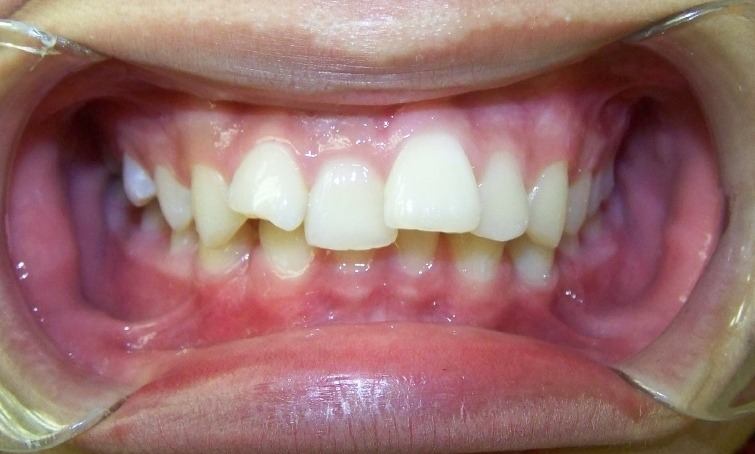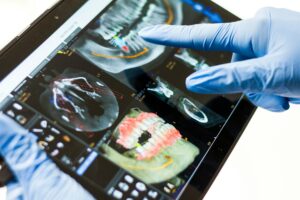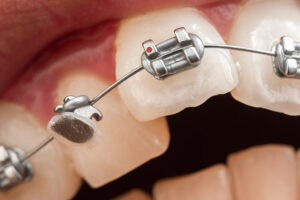Ever caught yourself staring at a mirror, wondering why your teeth decided to throw a party and forgot to invite you? Well, you’re not alone. Crooked teeth are like uninvited guests at the soiree of your mouth, affecting folks all around the globe. But before you start thinking of your smile as the awkward wallflower of the dental dance floor, it’s essential to understand that crooked teeth are more common than perfect pitch at a karaoke bar. And there’s plenty we can do about them.
Crooked teeth aren’t just a cosmetic concern; they’re a party full of potential oral health crashers, from decay to gum disease. But fear not, because addressing them isn’t just about flashing a red-carpet-worthy smile; it’s about ensuring your mouth’s health is in tip-top shape for the long haul.
In this guide, we’ll dive deep into the world of crooked teeth—unraveling the mystery of what causes them, the impact they can have on your oral and overall well-being, and the various ways to straighten things out. Whether you’re contemplating braces, curious about Invisalign, or just want to know more about your dental disposition, you’re in the right place. Let’s get this party started and turn those crooked teeth into the life of the oral health party!
Understanding Crooked Teeth
When we talk about “crooked teeth,” what exactly are we picturing? It’s not just about teeth throwing shapes more complex than a modern dance routine. The term encompasses a variety of dental misalignments—think of it as teeth deciding to freestyle, ranging from mild overcrowding to a full-blown interpretive dance of overbites, underbites, and crossbites.
So, what’s the big deal with crooked teeth, aside from the obvious aesthetic implications? Well, it turns out that these dental deviations are more than just a cosmetic concern. They’re like the troublemakers of the mouth, potentially leading to a host of oral health issues. Difficulty in cleaning, increased risk of cavities and gum disease, and even challenges in chewing and speech can all be part of the crooked teeth conundrum.
But here’s where it gets interesting: crooked teeth are incredibly common. It’s rare for someone to have a naturally perfect alignment, so if your teeth have decided to go off-script, you’re in good company. The “crooked teeth meaning” extends beyond the literal misalignment—it’s a signal from our bodies that something might be amiss, whether it’s genetic inheritance, environmental factors, or habits formed in childhood.
What Causes Crooked Teeth?
Diving into the root causes of crooked teeth is a bit like unraveling a mystery where genetics and lifestyle choices play the leading roles. So, what causes these dental deviations? Let’s break down the usual suspects.
- Genetics: Just like you might inherit your grandma’s eyes or your dad’s sense of humor, the likelihood of having crooked teeth can also be passed down through families. If your parents needed braces, there’s a chance you might need them too. Genetics can determine the size of your teeth and jaw, leading to overcrowding or underbites if the puzzle pieces don’t quite fit together.
- Early Loss of Baby Teeth: Those baby teeth are placeholders for your adult teeth, guiding them into the correct position. If they fall out too early, due to decay or injury, the remaining teeth might drift into the empty space, leading to alignment issues when the adult teeth show up to the party.
- Improper Fit of Dental Restorations: Sometimes, dental work like crowns or fillings doesn’t fit as well as it should, leading teeth to shift into awkward positions. It’s like trying to fit into a pair of jeans that’s just a bit too tight—something’s going to end up out of place.
- Habits: Childhood habits like thumb sucking, prolonged use of a pacifier, or even tongue thrusting can exert pressure on teeth, nudging them out of alignment. These habits are the sneakier culprits behind crooked teeth, often going unnoticed until the misalignment becomes apparent.
- Trauma: A sudden impact to the mouth can knock teeth out of line, creating a domino effect of shifting and misalignment. It’s a more immediate and obvious cause, often requiring prompt orthodontic intervention to correct.
Understanding “what causes crooked teeth” is crucial because it helps tailor the prevention and treatment strategies. While we can’t do much about the genes we inherit, we can certainly address the habits and environmental factors contributing to dental misalignments. Whether it’s encouraging proper dental care from a young age, using protective gear during sports, or correcting harmful oral habits, there are steps we can take to reduce the risk of developing crooked teeth. And if genetics decide to throw a curveball, modern orthodontics is more than ready to catch it, offering solutions that can lead to a healthier, straighter smile.
Treatment Options for Crooked Teeth
Navigating the world of treatment options for crooked teeth can feel a bit like choosing the right path in a labyrinth – there are several routes, each leading to a straighter smile, but the best choice depends on your unique needs and preferences. Let’s explore the main avenues available:
Traditional Metal Braces
The classic, time-tested solution. Metal braces are highly effective for correcting a wide range of orthodontic issues, from simple misalignments to complex bite problems. They’re versatile and cost-effective, making them a popular choice for patients of all ages. The downside? Their visibility and the need for dietary adjustments and meticulous cleaning.
Ceramic Braces
For those seeking a less noticeable option, ceramic braces offer the reliability of traditional braces with a subtler appearance. The brackets are made from a ceramic material that blends with the color of your teeth, making them less visible. They’re a great compromise between aesthetics and functionality, though they may come with a higher price tag and require extra care to prevent staining.
Invisalign Clear Aligners
Invisalign has revolutionized orthodontic treatment by offering a virtually invisible way to straighten teeth. Using a series of custom-made, clear plastic aligners, Invisalign gently shifts your teeth into place over time. It’s an appealing option for adults and teens who prefer a discreet solution. Plus, the aligners are removable, making eating and oral hygiene a breeze. However, Invisalign might not be suitable for the most complex orthodontic cases and requires discipline to wear the aligners as prescribed.
Lingual Braces
Like secret agents of the orthodontic world, lingual braces are hidden from view because they’re attached to the backside of the teeth. They offer the effectiveness of traditional braces without the aesthetic concern. Lingual braces are custom-made for each patient, providing a personalized treatment that’s invisible to the outside world. The trade-off includes potential discomfort and difficulty in cleaning.
Retainers
Often used after braces or Invisalign treatment, retainers are crucial for maintaining the results. They prevent teeth from gradually shifting back to their original positions. Some retainers are fixed, while others are removable, and they play a vital role in preserving the hard-earned alignment achieved through orthodontic treatment.
Each treatment option comes with its set of pros and cons, and the right choice varies depending on individual factors like the severity of misalignment, lifestyle, budget, and personal preferences. Consulting with an experienced orthodontist is essential to navigate these options and develop a treatment plan tailored to achieve the best possible outcome for your smile.
Conclusion
In wrapping up our exploration of crooked teeth, it’s clear that straightening your smile transcends cosmetic benefits, touching on deeper aspects of oral health and personal well-being. The journey from understanding the roots of misalignment to selecting an appropriate treatment is deeply personal, requiring thoughtful consideration and guidance from a professional orthodontist. Each treatment path, from traditional braces to Invisalign, offers a route to not just a more attractive smile, but a healthier one too.
Making an informed decision on how to correct crooked teeth involves weighing factors unique to your situation, underscored by the expertise of a trusted orthodontic partner. As orthodontic technology advances, achieving a beautifully aligned smile has become more achievable and convenient, promising significant improvements in both appearance and oral health.






